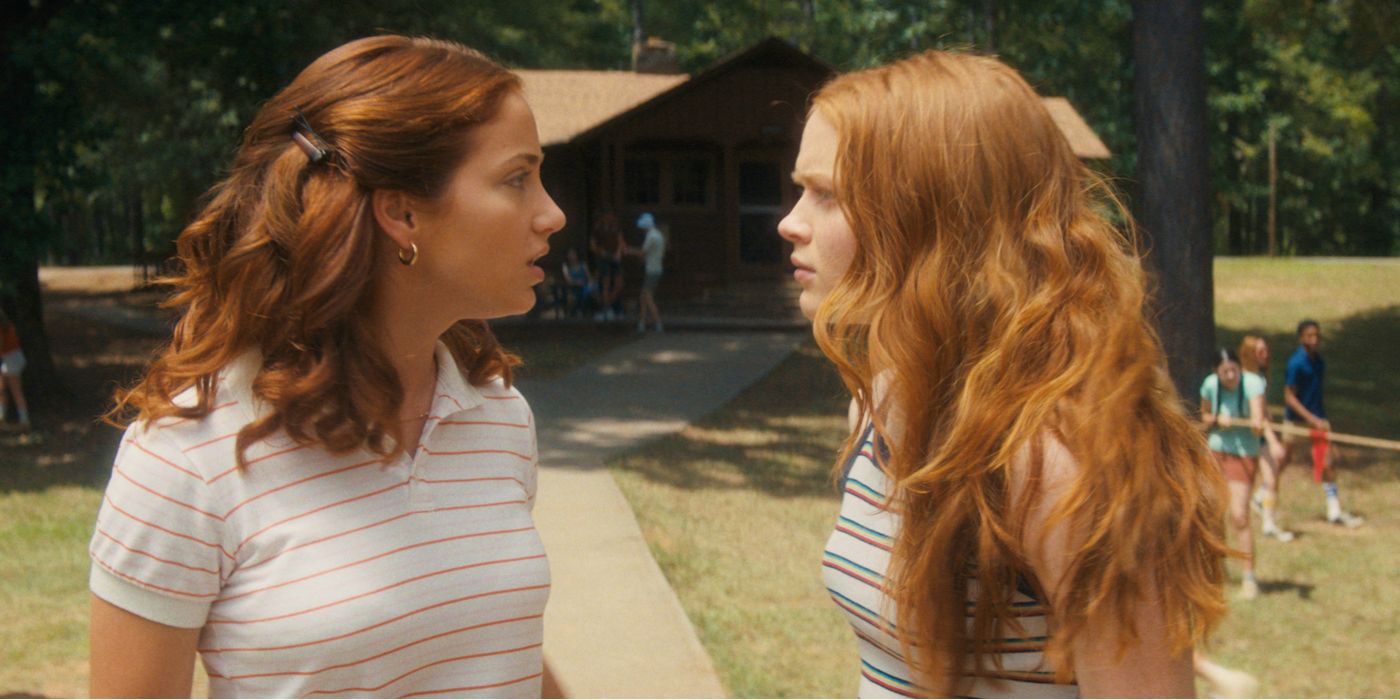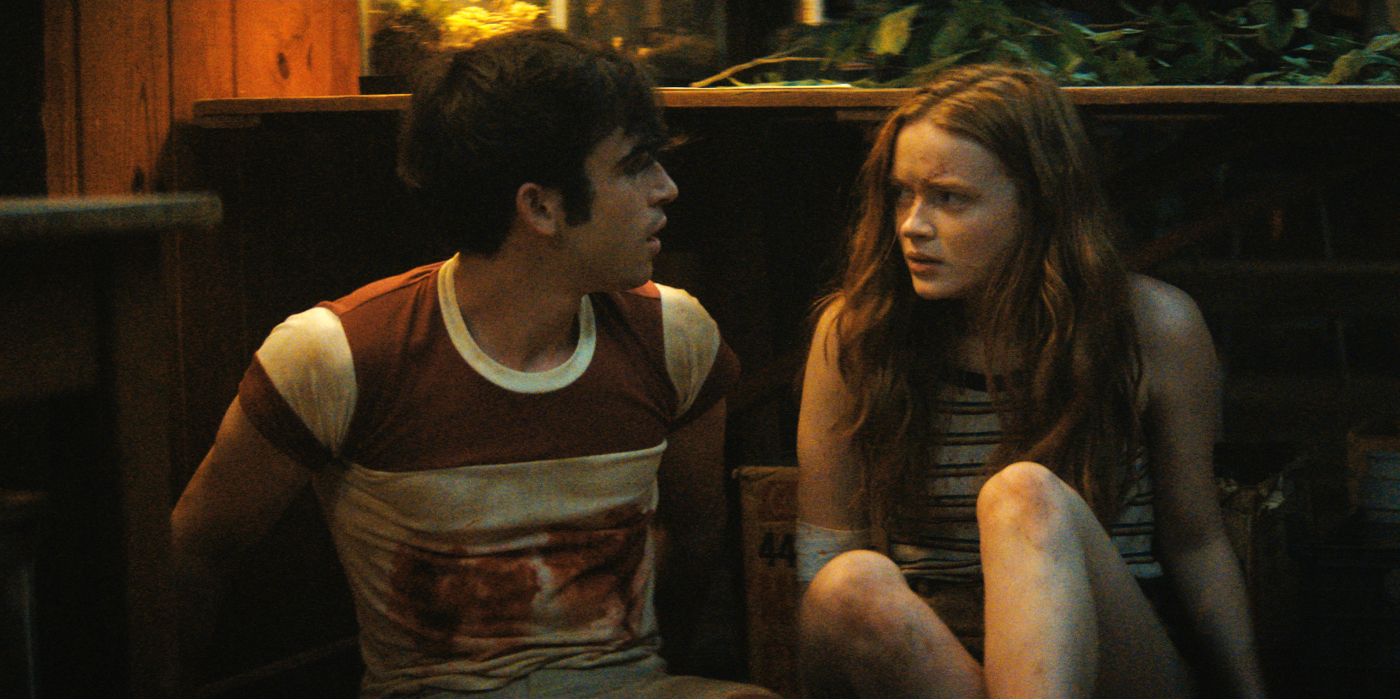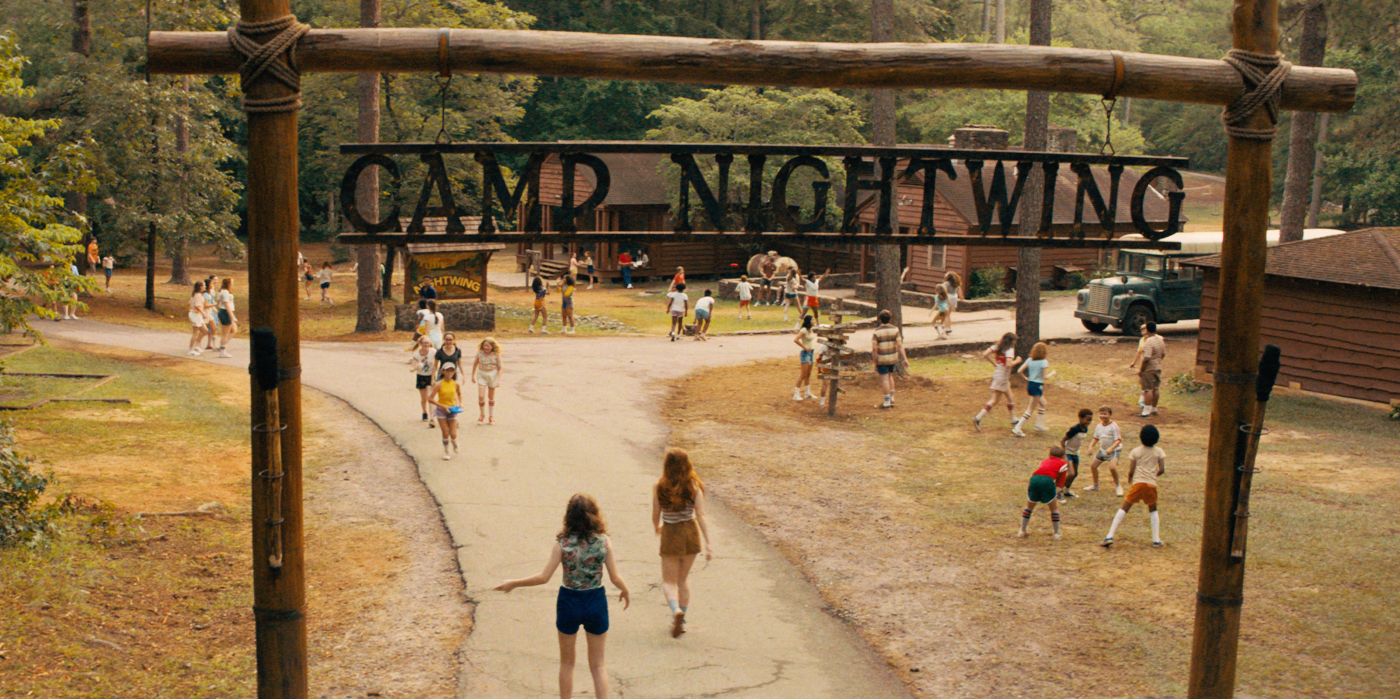
Supernatural killers, hormonal teenagers and a heavy dose of shlock once again make for an explosive mixture in Fear Street Part 2: 1978, the second entry in Netflix's trilogy of horror films based on R.L. Stine's cherished novels. Much like Fear Street Part 1: 1994 tips its hat to '90s-era slashers, Part 2: 1978 takes its cues from Friday the 13th and similar thrillers that pit horny campers against fun-hating murderers. Although it lacks the element of surprise that made Part 1: 1994 such a hoot, Fear Street Part 2: 1978 is gorier and more confident in terms of its execution, yet just as delightfully kitschy.
Part 2: 1978 starts in the home of "C. Berman" (Gillian Jacobs), a reclusive citizen of Shadyside who has vital information Part 1: 1994 heroes Deena (Kiana Madeira) and Josh (Benjamin Flores Jr.) need to undo the witch's spell on Deena's girlfriend Samantha (Olivia Welch) and rid their troubled town of Sarah Fier's dark enchantment. Through a flashback sequence that spans nearly the entire movie, Berman tells them the truth about the infamous 1978 massacre at Camp Nightwing -- a place where teens from Sunnyvale and Shadyside used to come together for a summer of not-so-friendly games, pranks and casual hook-ups.
Co-writer/director Leigh Janiak, as she did with Part 1: 1994, wholeheartedly embraces the lurid tone of Stine's Fear Street books in Part 2: 1978 while simultaneously evolving their tropes. Whereas the slashers of the '70s and '80s were notorious for sicking their villains on adolescents who acted upon their sexual desires, Part 2: 1978 makes it clear that being a virgin won't protect Nightwing's campers and counselors from becoming Sara Fier's targets. Janiak and her cinematographer Caleb Heymann are equally considerate in the way they handle the scenes where characters are either going to pound-town or getting axed to death, filming them in a manner that's visceral without ever crossing into exploitative.

While Part 2: 1978 lacks Part 1: 1994's radical queer romance, it offers a touching story of sisterly love centered on Cindy Berman (Emily Rudd), a goody-two-shoes member of the Camp Nightwing staff, and her younger sibling Ziggy (Sadie Sink), a quarrelsome camper who's constantly getting into trouble. Sink, delivering the same perfect blend of toughness and vulnerability she brings to her role as Max in Stranger Things, plays well against Rudd as Cindy -- a teenager who's been forced to grow up too quickly and too soon. Much like Deena and Samantha, the Berman sisters are being torn apart by Shadyside's financial woes and the effect it's had on their parents, which causes the pair to lash out at one another.
Part 2: 1978 also features memorable supporting players like Alice (Ryan Simpkins), Cindy's free-wheeling ex-friend and fellow camp counselor, who plays a key part in Cindy's arc. Keeping its attention focused on the women in its story, Part 2: 1978 further introduces Jordana Spiro as Nightwing's traumatized nurse Mary Lane, the mother of the singing, razor blade-slinging possessed killer Ruby (Jordyn DiNatale) from the first film -- one of several ways the second Fear Street movie expands the mythology behind Sarah Fier's curse while leaving some questions unanswered for Part 3: 1666 to address.
Building upon Part 1: 1994's subtext about class warfare, Part 2: 1978 reveals that Camp Nightwing functions as a microcosm of adult society in the Fear Street universe; while the counselors who come from wealth and privilege in Sunnyvale run the show and make the rules, the staffers from Shadyside are stuck cleaning outhouses and scrubbing the floors of the mess hall. The film also incorporates Ted Sutherland as a young Nick Goode, fleshing out his backstory and revealing Shadyside's future sheriff as being more self-serving than he seemed in the first Fear Street movie. In this sense, Part 2: 1978 not only carries over its predecessor's social commentary but also makes it more integral and organic to the narrative.

Between the earthy tones of its wilderness scenery and a soundtrack composed of rebellious '70s tunes and punk-rock anthems, Part 2: 1978's setting and needle-drops contrast nicely with those from Part 1: 1994. The thrills are just as gruesome and intensely staged this time around, though the third act is less inventive since it uses plot points and imagery similar to those in Part 1: 1994. However, Part 2: 1978 is limited by the fact it's mostly a prequel to Part 1: 1994, making it harder to create tension around which of the film's characters will survive. Not helping its cause, the movie attempts to throw in a twist that's easy to see coming a mile away.
That said, the journey to Part 2: 1978's outcome is so entertaining it doesn't matter if you know what the final destination is. Like Part 1: 1994 and Stine's Fear Street novels, the joy comes from the unbridled enthusiasm with which the movie brings its horror to life. With Part 3: 1666 promising to take audiences back in time for a story that looks like a bloodier, hornier version of The Crucible, it's possible the best of Janiak's trilogy of terror has yet to come.
Directed and co-written by Leigh Janiak, the Fear Street trilogy stars Sadie Sink, Kiana Madeira, Olivia Welch, Benjamin Flores Jr., Darrell Britt-Gibson, Ashley Zuckerman, Fred Hechinger, Julia Rehwald, Jeremy Ford and Gillian Jacobs. Part 1: 1994 is now available on Netflix. Part 2: 1978 begins streaming July 9, followed by Part 3: 1666 on July 16.
0 Comments